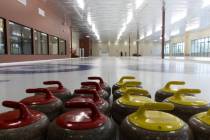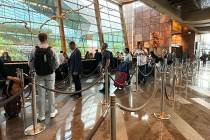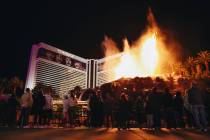Gaming, tourism offer a variety to Nevada’s tax base

The gaming and tourism industries pay far more toward Southern Nevada’s tax base than just room taxes.
A recent presentation on the industry’s contribution to major public revenue before the Las Vegas Convention and Visitors Authority in advance of its adoption of a $359.8 million operating budget showed that.
The presentation’s author, Jeremy Aguero, isn’t just a guy who knows every nut and bolt associated with the Las Vegas Stadium Authority.
The principal of Las Vegas-based Applied Analysis analyzes data for reports on economic development, employment, taxation and other topics of interest to the gaming and tourism industries.
Aguero’s theme was showing that while room-tax revenue is the primary source of LVCVA revenue — frequently in the news as the public debates whether a $750 million public contribution should have been spent on education instead of the construction of a stadium that will be used by the Raiders and UNLV — the original intent of that revenue’s use was to reinvest it in attracting more visitors.
Some of the takeaways:
— Visitors to Southern Nevada spent an estimated $34.8 billion in 2017.
That includes $6 billion for shopping and $4 billion for food and beverage, both of which are subject to sales tax. At an 8.25 percent rate, that calculates out to $419.8 million and $292.3 million per year, respectively.
— The county collects an estimated $1.5 billion a year in industry-specific taxes and fees.
Of that, $652.8 million is in gaming taxes, $741.1 million from lodging taxes and $100 million from live entertainment taxes.
— In 1959, when room taxes were first enacted, 100 percent of it went to support the LVCVA.
Over time, other interests have carved out portions of it. As of 2017, the LVCVA receives 33.6 percent of the revenue.
— The LVCVA now gets about $271 million of the total room tax.
Education receives $278 million and other uses get $192 million. By percentage, the LVCVA nets 33.6 percent, the state distributive school account gets 23.9 percent, the Clark County School District receives 13.7 percent and local governments take 21.1 percent for parks, transportation and other government uses.
The smallest percentages go to Nevada Department of Transportation debt service, paying for highways that already have been built and are in use, 2.6 percent; the Nevada Commission on Tourism, 3 percent; and the Las Vegas Stadium Authority, 2.3 percent.
— The LVCVA has the monetary value of how much convention visitors are worth in tax revenue.
Convention visitors account for $361.7 million in annual tax revenue, with $182.3 million coming from room taxes, $109.6 million from sales and use taxes, $62.5 million from gaming taxes and fees and $7.3 million from the live entertainment tax.
— The gaming and tourism industry pays a large percentage of other taxes.
The industry is responsible for $118.2 million of the modified business tax, $39.2 million in alcohol and tobacco taxes and $32.2 million from the commerce tax.
— Hotels and casinos pay about nine times more than average in property taxes.
Seven of the 10 highest assessed taxpayers in Clark County are hotel and casino companies. MGM Resorts International and Caesars Entertainment are the top two.
Those tax payments result in higher personal income for all Nevadans since our state is one of seven that don’t have a personal income tax. It also doesn’t have a corporate income tax enabling business growth in the community.
While some feel the state’s tax structure is flawed and there are better ways to finance public needs, it’s hard to argue that there isn’t a lot to like about how we do business in Nevada.
Contact Richard N. Velotta at rvelotta@reviewjournal.com or 702-477-3893. Follow @RickVelotta on Twitter.













